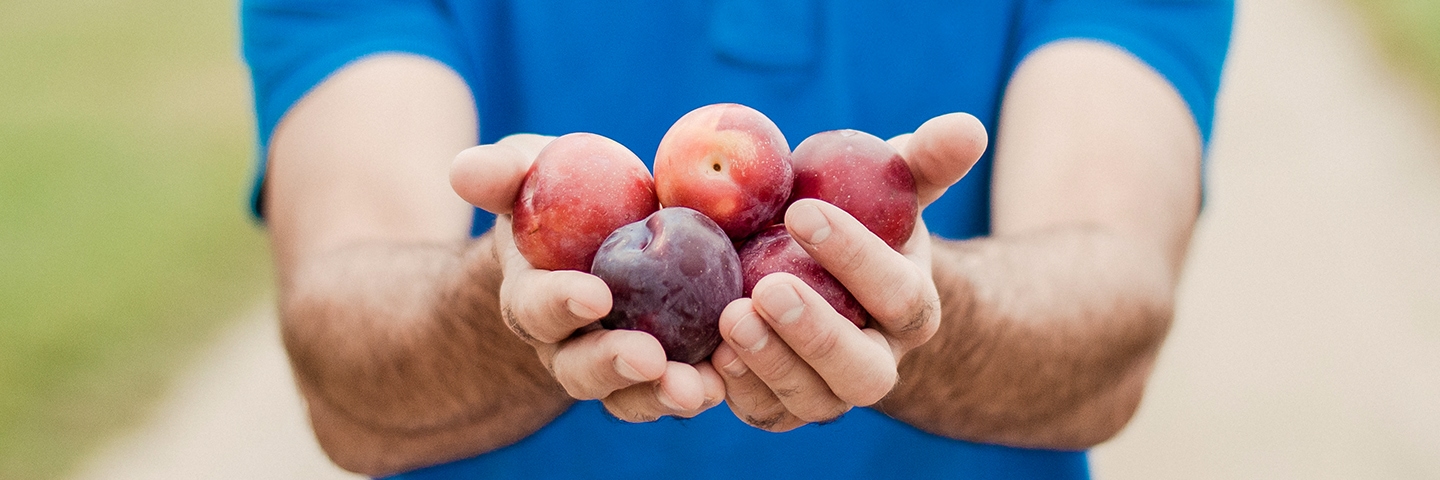
Plums
ONCE UPON A TIME… THERE WAS THE PLUM
Growing wild in America and Asia, plum trees were first grown by the Etruscans (in what is now Tuscany). The Romans and Egyptians liked this small, tasty fruit, which they also dried.
In the 12th century, Crusaders returning from an unsuccessful expedition to Damascus brought back some plum tree plants, which attracted the gibe: “all that way just for some plums!” Hence the well-known French expression…
Plums were very popular during the Renaissance. Reine-Claude greengages were named as a tribute to the wife of François I, Claude de France, the daughter of Anne of Brittany, who loved them.
Today there are around 2,000 varieties worldwide. France is the world’s 4th biggest producer. The market is concentrated around ten varieties that are usually classified by colour: green, yellow, blue or red.
HOW TO CHOOSE PLUMS
You can often see a translucent white coating on plums. This is a sign of freshness and is known as bloom; it’s a fine, natural skin that protects the fruit against external damage, particularly from the sun.
Buy your plums nice and firm, then leave them to ripen peacefully in a fruit bowl at room temperature.
They are ready to eat when they « give » slightly under fringe pressure.
NUTRITION & HEALTH
A fruit that’s small in size but big in terms of the many benefits it offers your body!
Plum = 72 Kcal
Nutritional values of plums
Proteins : 0.6g
Lipids : 0.6g
Carbohydrates : 16g
Detoxifying
Plums provide all the vitamins (A, B, C and E) required to renew the skin cells and thus slow the effects of ageing on the skin.
Made up of 80% water, plums are rich in trace elements and minerals, which accentuate their detoxifying, moisturizing effect.
Low on calories
With an average of only 72 calories per 100g, plums are the ideal fruit for food-lovers who are watching their waist-lines!
Easy to digest
Rich in fibres and with a high concentration of sorbitol, plums help you to digest your meal steadily.